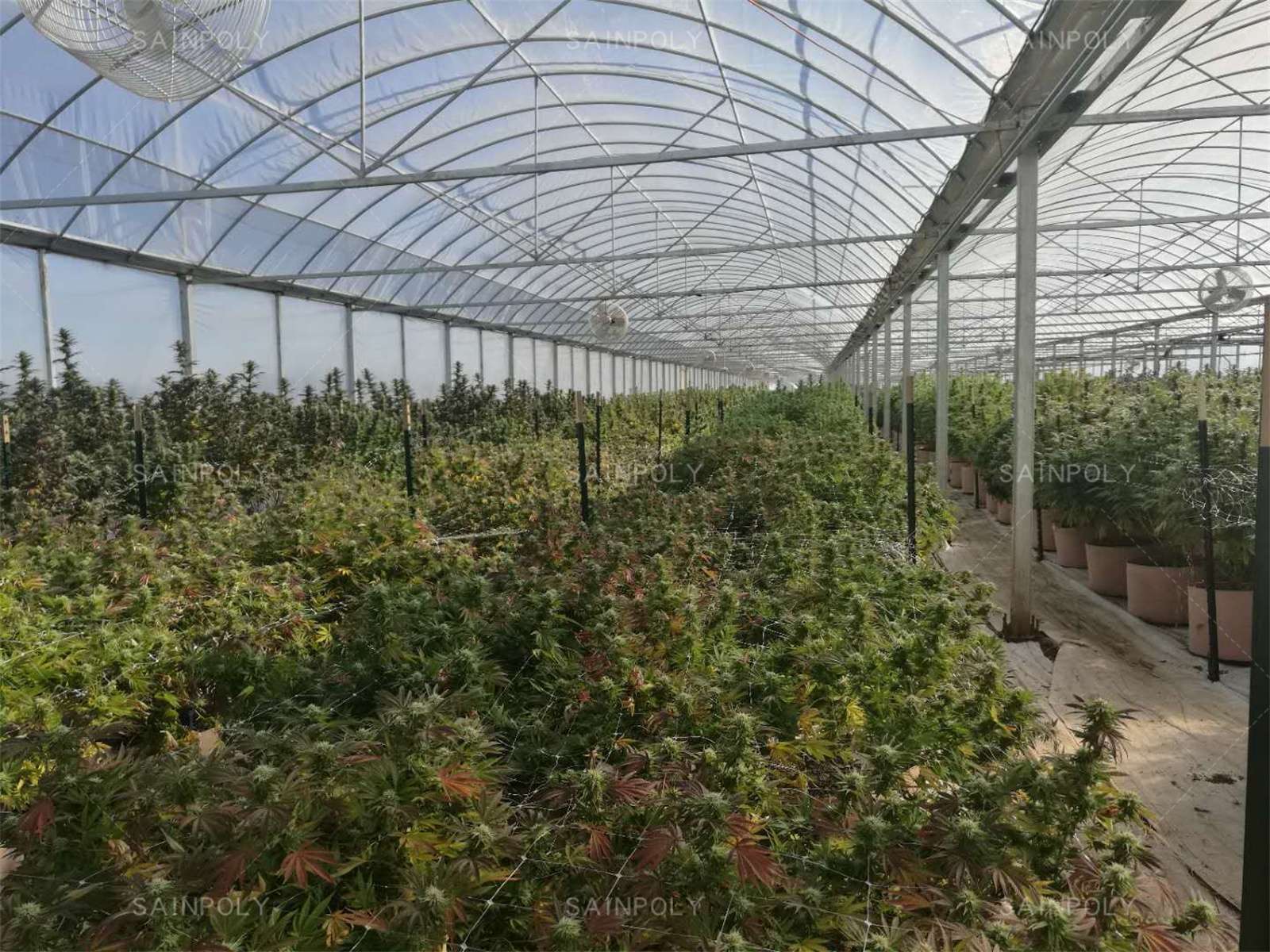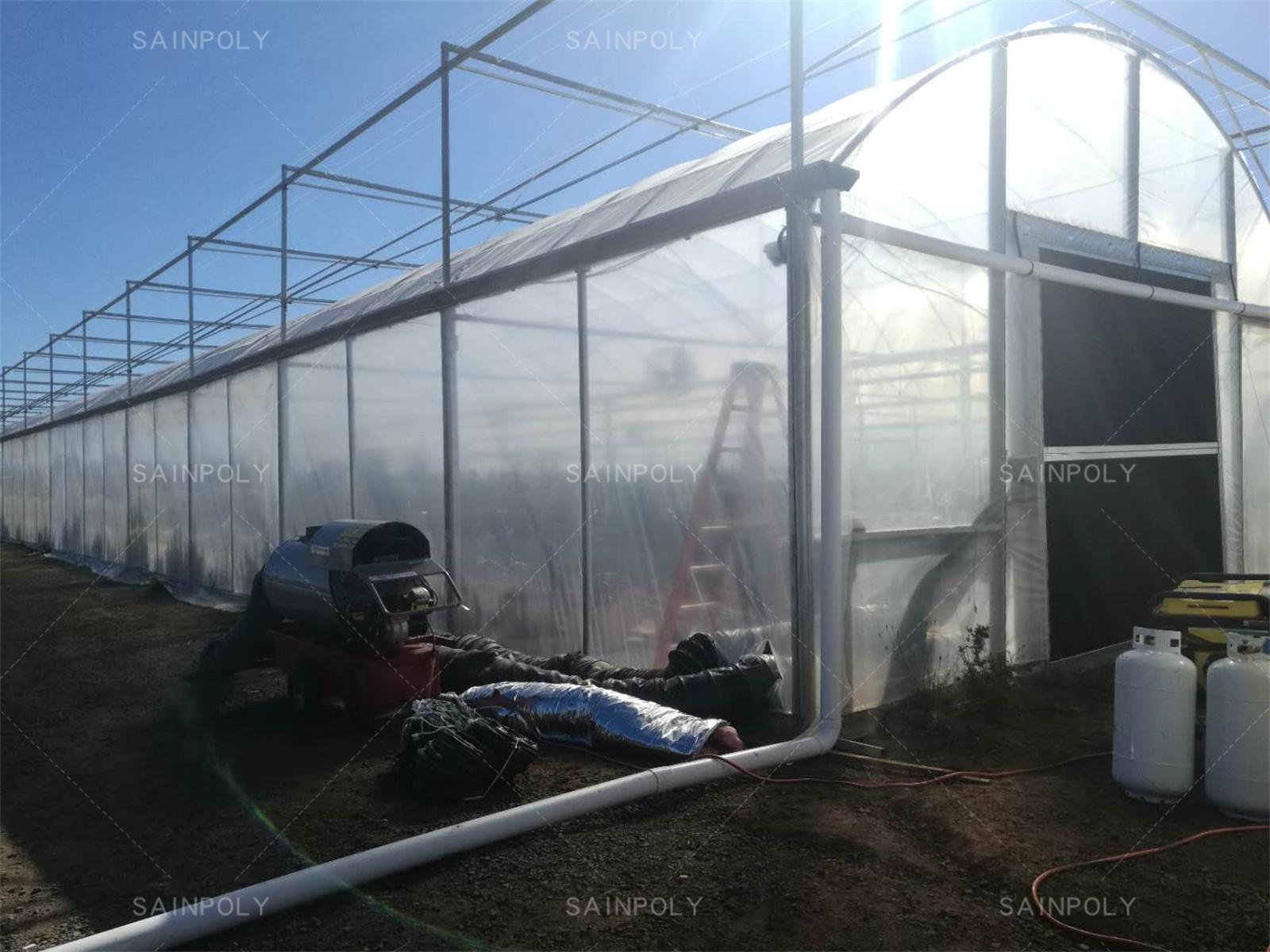Introduction
Greenhouses have been a cornerstone of modern agriculture for centuries, providing controlled environments for cultivating a wide range of crops. Traditional greenhouses, with their transparent or semi-transparent roofs, have long been the standard. However, in recent years, a new concept has emerged – China Quality Black Out Greenhouses. In this article, we will explore what China Quality Black Out Greenhouses are and how they differ from traditional greenhouses.

Traditional Greenhouses
- Definition and Characteristics
Traditional greenhouses, also known as glasshouses or hothouses, are structures primarily made of glass or plastic materials, allowing sunlight to penetrate and heat to be trapped within. They provide a controlled microclimate, shielding plants from adverse weather conditions and extending the growing season. These structures are widely used for growing a variety of crops, from vegetables to flowers.
- Basic Structure and Design
Traditional greenhouses typically have a gabled or curved roof, with walls and roofs made of transparent materials. The shape and design vary, but they all aim to maximize the amount of natural light that enters the structure. This design allows plants to receive sunlight from various angles throughout the day.
- Common Materials Used
Glass and polyethylene are the most common materials used in traditional greenhouse construction. Glass provides excellent light transmission and durability but can be costly. Polyethylene is more affordable but has limitations in terms of insulation.
- Natural Lighting and Ventilation
Traditional greenhouses rely on natural lighting and ventilation. Plants receive sunlight during the day, and air circulation is maintained through roof vents or sidewall vents. These structures are highly dependent on external conditions for light and temperature control.
- Limitations and Challenges
Traditional greenhouses have several limitations. They often experience fluctuations in temperature, and excessive heat buildup can be a problem during the summer. The reliance on natural light means that crops are subject to seasonal variations, and supplemental lighting may be necessary in low-light conditions. Additionally, energy consumption can be high, as heating, cooling, and ventilation systems are often needed.
China Quality Black Out Greenhouses
- Definition and Key Features
China Quality Black Out Greenhouses are a relatively new concept in the world of greenhouse agriculture. They are designed to address many of the limitations of traditional greenhouses. These advanced structures are equipped with blackout systems that can block out light entirely, providing precise control over the photoperiod, or the duration of light exposure, for crops.
- Structural Differences
The key structural difference in China Quality Black Out Greenhouses is their light-blocking capabilities. These greenhouses are built with blackout curtains or other materials that can completely obscure natural light when needed. This feature allows growers to create darkness at any time, effectively extending or shortening the photoperiod to suit specific crops or growth stages. Additionally, China Quality Black Out Greenhouses typically have better insulation and climate control mechanisms.
- Materials and Technology Used
These greenhouses are often constructed using high-quality materials to ensure durability and efficiency. The blackout curtains or systems are made from specialized light-blocking materials that can withstand continuous use. Advanced climate control technology, such as automatic ventilation and heating systems, is also commonly integrated.
- Advanced Blackout Systems
The blackout systems in China Quality Black Out Greenhouses are technologically advanced. They can be controlled remotely and programmed to create specific light conditions. This level of precision allows growers to optimize growing conditions for different crops and achieve consistent yields throughout the year.
- Energy Efficiency and Sustainability
One of the key advantages of China Quality Black Out Greenhouses is their energy efficiency. By controlling the light and temperature conditions, energy consumption can be significantly reduced. These greenhouses are also designed with sustainability in mind, with features like rainwater harvesting and efficient insulation.
Differences and Advantages
- Crop Growth and Yield
The ability to control the photoperiod is a significant advantage of China Quality Black Out Greenhouses. For many crops, precise control over the duration of light exposure can accelerate growth and promote flowering and fruiting. This means that crops can be grown out of season, and yields can be increased.
The insulation and climate control mechanisms in these greenhouses also contribute to higher crop quality and yield. Consistent temperature and humidity levels create an ideal environment for plant growth, reducing stress on the crops and minimizing the risk of disease or pest infestations.
- Energy Efficiency and Cost-Effectiveness
China Quality Black Out Greenhouses are designed for energy efficiency. The ability to block out light reduces the need for artificial lighting, and advanced ventilation and insulation systems help maintain stable temperatures with lower energy consumption. This results in reduced operational costs and improved profitability for growers.
- Environmental Impact and Sustainability
Sustainability is a critical consideration in modern agriculture. China Quality Black Out Greenhouses are designed with sustainability in mind. Rainwater harvesting, efficient insulation, and reduced energy consumption contribute to a smaller environmental footprint. Additionally, the ability to grow crops year-round reduces the need for long-distance transportation and minimizes the carbon footprint associated with food production.
- Crop Diversification and Year-Round Production
One of the most significant advantages of China Quality Black Out Greenhouses is the potential for crop diversification and year-round production. These greenhouses can be used to grow a wide range of crops, including those that are traditionally seasonal. By providing a stable environment, they enable growers to expand their product range and generate revenue throughout the year.
Examples and Case Studies
China Quality Black Out Greenhouses have gained popularity in various parts of the world, particularly in regions with harsh climates or where year-round production is desirable. In the Netherlands, for instance, these greenhouses are used to cultivate high-value crops like tomatoes, cucumbers, and flowers. The precise control over light and temperature allows Dutch growers to produce consistent, high-quality products for export.
In regions with extreme weather conditions, such as the Middle East, China Quality Black Out Greenhouses have enabled the cultivation of crops that would otherwise be impossible. For example, in the United Arab Emirates, these greenhouses are used to grow a wide range of vegetables and fruits year-round.
Conclusion
China Quality Black Out Greenhouses represent a significant advancement in greenhouse technology. These structures address many of the limitations of traditional greenhouses by offering precise control over the photoperiod, improved energy efficiency, and a more sustainable approach to agriculture. They are becoming increasingly popular worldwide, allowing growers to diversify their crops and achieve higher yields. As we move forward in modern agriculture, the adoption of such advanced technologies is crucial for meeting the growing demands for food production while minimizing environmental impacts.
Related Products









